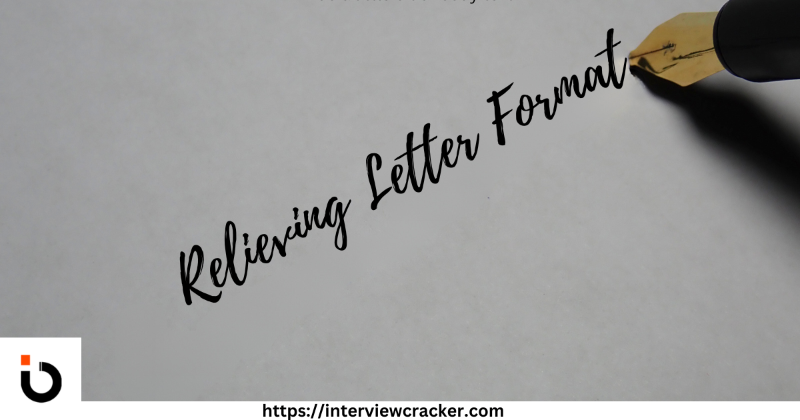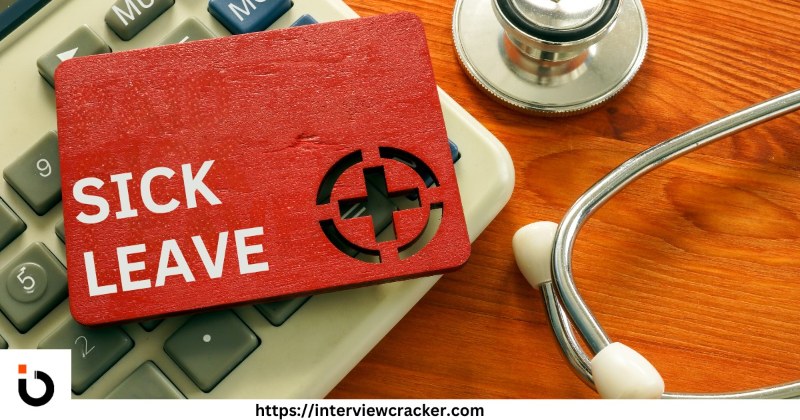What is Job Relieving Letter?
A relieving letter is an official document issued by an employer to an employee upon their resignation or termination. It serves as a formal acknowledgment that the employee has been relieved from their duties and responsibilities in the organization. The relieving letter is an important part of the exit process and is typically provided to the departing employee on their last day of work or shortly thereafter.
What is a Relieving Order?
A relieving order, also known as a relieving letter, is an official document issued by an employer to an employee when the employee is relieved from their duties or responsibilities within the organization. This document serves as formal confirmation that the employee has been released from their job and is no longer associated with the company.
Why is Relieving Letter Important?
The relieving letter is important for several reasons:
Formal Closure: It provides a formal closure to the employee-employer relationship, officially acknowledging the end of the employment contract.
Proof of Employment: The relieving letter serves as proof of the individual’s employment with the company, which may be required for various purposes such as future job applications, visa applications, or financial transactions.
Smooth Transition: It helps in facilitating a smooth transition for the employee to their next job or endeavor by providing clarity on the termination process and the completion of obligations.
Legal Documentation: In some cases, a relieving letter may be required for legal purposes. It can be used as evidence in case of any disputes or legal issues that may arise between the employer and the departing employee.
Clearance for Final Dues: The letter may mention that the employee has cleared all dues and responsibilities, and it may be a prerequisite for the settlement of final payments, such as salary, pending bonuses, or any other financial entitlements.
Professional Etiquette: It is considered a professional and courteous practice for employers to issue a relieving letter to employees who are leaving the organization. It reflects positively on the employer and can contribute to maintaining a positive employer brand.
Overall, a relieving letter plays a crucial role in the professional life of an employee, providing closure to their current employment and ensuring a smooth transition to their next phase of career or personal endeavors.
Relieving Letter Format for Employer/HR
Here’s a sample relieving letter format. Remember to customize it according to your organization’s policies and specific details:
[Your Company Letterhead]
[Your Company Name]
[Company Address]
[City, State, Zip Code]
[Date]
To,
Dear [Employee’s Name],
Subject: Relieving Letter
We hereby accept your resignation dated [date of resignation] and acknowledge the completion of your notice period, which ended on [last working day]. This letter serves as confirmation that you are relieved from your duties at [Company Name] effective [last working day].
Details to Include:
- Acknowledgment of Resignation
- Effective Date of Relieving
- Appreciation for Service
- Notice Period Completion
- Final Settlement
- Return of Company Property
- Positive Tone
- Best Wishes
Closing:
Should you need any clarification or assistance in the future, feel free to contact [HR Manager’s Name] at [HR Manager’s Email] or [HR Manager’s Phone Number].
Thank you for your dedicated service to [Company Name]. We wish you the very best in your future endeavors.
Sincerely,
[Your Name]
[Your Title]
[Company Name]
[Contact Information]
[Company Seal or Stamp]

Details Required in a Relieving Letter
Relieving letter includes several important details, while the specific format and content may vary by organization. Here are the common details usually found in a relieving letter:
- Employee Information:
- Full name of the employee.
- Employee identification or staff number.
- Designation or position held in the organization.
- Effective Date of Relieving:
The specific date on which the employee is officially relieved from their duties. This is often the last working day.
- Acknowledgment of Resignation or Termination:
A clear statement acknowledging the employee’s resignation or mentioning the reason for termination. This can include a reference to the resignation letter submitted by the employee.
- Notice Period Completion:
Confirmation that the employee has completed the required notice period, if applicable. This may include details about any pending tasks or responsibilities during the notice period.
- Final Settlement Details:
Information on the final settlement, including details on any pending dues, salary, benefits, and other financial matters.
- Leave Encashment:
If applicable, details about the encashment of any unused leave days.
- Return of Company Property:
Instructions or confirmation regarding the return of company property, such as ID cards, access cards, laptops, or any other assets provided to the employee.
- Conduct and Performance Assessment:
A brief statement about the employee’s conduct and performance during their tenure with the organization. This is often a neutral or positive comment and may include the employee’s contributions to the company.
- Best Wishes for the Future:
Well-wishing statements for the employee’s future endeavors.
- Contact Information for Verification:
Contact details of a designated person or department within the company that can be contacted for verification purposes.
- Official Signatures and Seal:
The letter is typically signed by an authorized representative of the company, such as the HR manager, director, or another designated official. It may also bear the company’s official seal or stamp.
It’s important for both the employer and the employee that the relieving letter is comprehensive and clear to avoid any misunderstandings. Employees often use this document as proof of employment when joining a new organization or for other official purposes, so accuracy and completeness are crucial.
How to Write a Relieving Letter?
When writing a relieving letter, there are several important considerations to keep in mind to ensure clarity, professionalism, and compliance with company policies. Here are some key things to remember:
- Accurate Details:
Ensure all information, such as employee details, dates, and financial matters, is accurate and error-free.
- Clear Acknowledgment:
Clearly acknowledge the acceptance of the employee’s resignation or state the reason for termination.
- Effective Date:
Mention the specific date on which the employee is officially relieved from their duties.
- Notice Period Completion:
Confirm that the employee has completed the required notice period satisfactorily.
- Final Settlement:
Clearly outline the details of the final settlement, including pending dues, salary, benefits, and leave encashment.
- Return of Company Property:
Instruct the employee on the return of company property, such as ID cards, access cards, laptops, or any other assets provided.
- Positive Tone:
Maintain a professional and positive tone throughout the letter, expressing appreciation for the employee’s contributions.
- Best Wishes:
Extend best wishes for the employee’s future endeavors to end the letter on a positive note.
- Contact Information:
Provide contact details for someone who can assist with any future inquiries or clarifications.
- Policy Adherence:
Ensure that the content aligns with the organization’s policies and practices.
- Legal Compliance:
Ensure the letter complies with relevant employment laws and regulations to avoid legal complications.
- Timeliness:
Issue the relieving letter on the employee’s last working day or shortly thereafter.
- Delivery Method:
Provide a physical copy of the relieving letter, and if possible, send a scanned copy through email for quick access.
- Review by HR or Legal:
Have the letter reviewed by the HR department or legal team to ensure compliance and mitigate legal risks.
- Customization:
Tailor the letter to the specific circumstances and policies of your organization.
- Sensitive Information:
Handle sensitive information with discretion, especially when discussing the reason for termination.
- Signature and Seal:
Ensure that the letter is signed by an authorized representative and includes the company’s official seal or stamp.
- Clarity and Transparency:
Communicate with clarity and transparency, providing a complete picture of the employee’s departure and the organization’s expectations.
Relieving Letter Template and Sample
Below is a sample of relieving letter for a software development employee
Relieving Letter
This is to certify that [Employee’s Full Name], Employee ID [Employee ID], has successfully completed his/her tenure as a Software Developer at [Company Name]. from [Joining Date] to [Last Working Date].
Throughout his/her tenure, [Employee’s Full Name] demonstrated a high level of proficiency in software development, attention to detail, and dedication to advancing our technological initiatives. We express our gratitude for his/her significant contributions during his/her time with us and extend our best wishes for his/her continued success in the future endeavors.
Sincerely,
[HR Manager’s Name]
[HR Manager’s Title]
[Contact Information]
Suggested Read: Say Goodbye Gracefully
Request For Relieving Letter By an Employee
Subject: Request for Relieving Letter From Company
Dear [HR Manager’s Name],
I hope this email finds you well. My name is [Your Full Name], and I worked as [Your Designation] at [Company Name] from [Joining Date] to [Last Working Day].
I am writing to request a relieving letter for my records and as a necessary document for my future employment opportunities. I have completed all the necessary formalities, including the notice period, and returned all company property.
Details for reference:
- Employee Name: [Your Full Name]
- Employee ID: [Your Employee ID]
- Designation: [Your Designation]
- Department: [Your Department]
- Last Working Day: [Last Working Day]
I would appreciate it if you could provide the relieving letter at your earliest convenience. If there are any additional formalities or information required from my end, please let me know, and I will be prompt in providing it.
Thank you for your attention to this matter. I look forward to receiving the relieving letter soon.
Best regards,
[Your Full Name]
[Your Contact Information]
[Your Email Address]
[Your Phone Number]
By paying attention to these aspects, you can create a well-crafted relieving letter that serves its intended purpose while maintaining professionalism and compliance with relevant regulations.
Practice For your Next Interviews:







